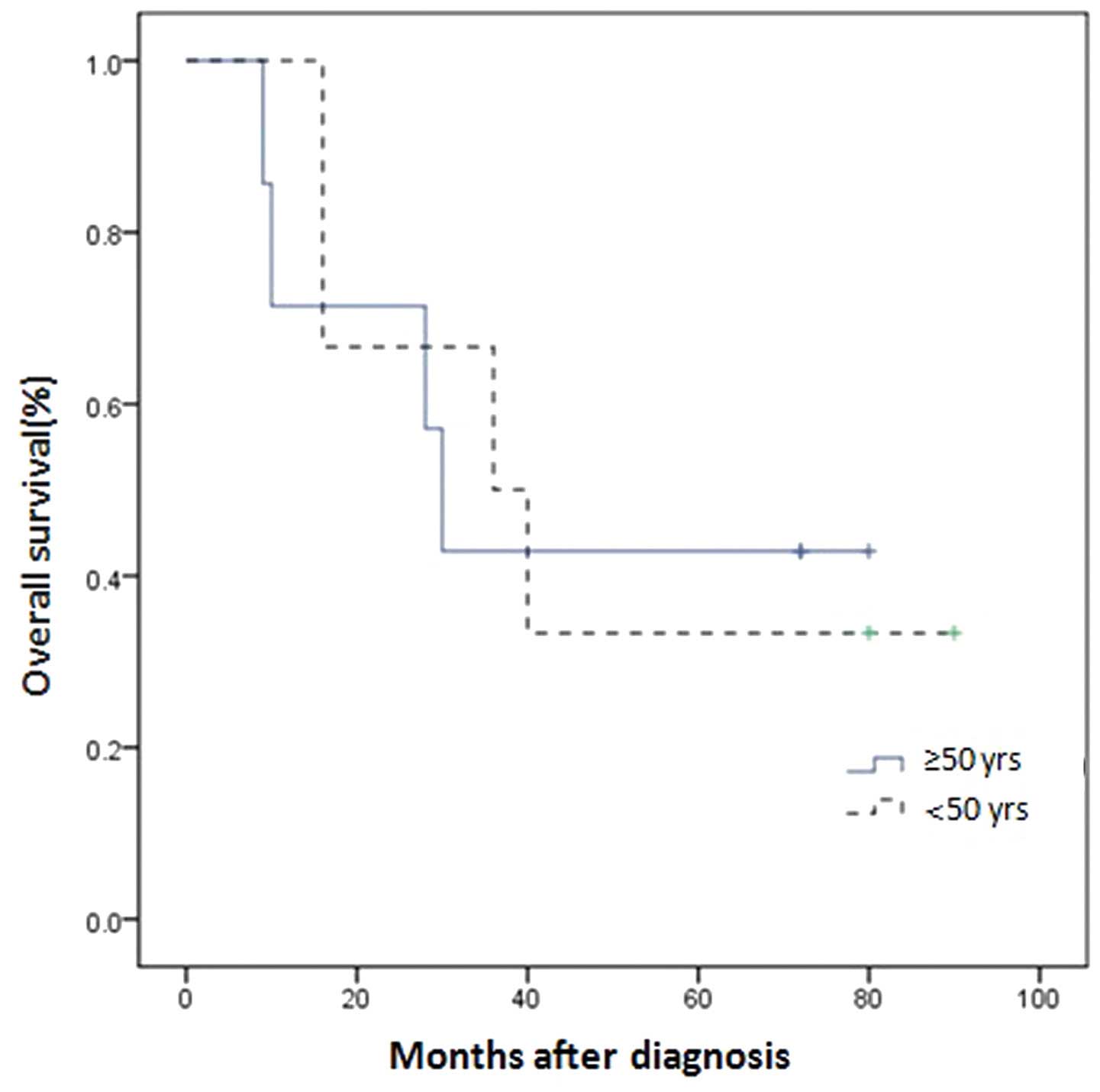Investigating urachal carcinoma for more than 15 years
- Authors:
- Duqun Chen
- Yifan Li
- Zuhu Yu
- Zhengming Su
- Liangchao Ni
- Yaoting Gui
- Shangqi Yang
- Bentao Shi
- Yongqing Lai
-
View Affiliations
Affiliations: Department of Urology, Anhui Medical University, Hefei, Anhui 230032, P.R. China, Department of Urology, Anhui Medical University, Hefei, Anhui 230032, P.R. China, Department of Urology, Peking University Shenzhen Hospital, Shenzhen, Guangdong 518036, P.R. China, Department of Urology, Peking University Shenzhen Hospital, Shenzhen, Guangdong 518036, P.R. China
- Published online on: September 4, 2014 https://doi.org/10.3892/ol.2014.2502
-
Pages:
2279-2283
Metrics:
Total
Views: 0 (Spandidos Publications: | PMC Statistics:
)
Metrics:
Total PDF Downloads: 0 (Spandidos Publications: | PMC Statistics:
)
This article is mentioned in:
Abstract
Urachal carcinomas are rare bladder malignances, which usually present at an advanced stage with a high risk of distant metastases and a poor prognosis. To improve understanding of this uncommon carcinoma, a retrospective review was conducted for the cases observed at Peking University Shenzhen Hospital and Peking University First Hospital. The clinical outcomes were analyzed for 17 patients with a diagnosis of urachal cancer, who were admitted to Peking University Shenzhen Hospital (Shenzhen, China) and Peking University First Hospital (Beijing, China) between 1998 and 2013. The TNM staging system was used to predict outcomes. Among the 17 study patients, there were 10 males and seven females, with a median age at diagnosis of 50 years. A total of four (23%) patients presented with lymph node or distant metastasis. The median overall survival time for all stages was 57.6 months, with five patients (38.4%) alive for more than five years following treatment. The application of the TNM staging system demonstrated a median survival time of 6.2 years for stage I/II patients, compared with a median survival of 1.8 years (log‑rank, P<0.001) for patients with advanced disease (stages III and IV). In addition, no significant correlation was observed between tumor size and age, and survival. In conclusion, urachal carcinomas are usually locally advanced at presentation. Surgical excision remains the predominant choice of treatment and lymph node dissection is not required unless lymph node involvement is confirmed by preoperative examination. The current results indicated that the most significant predictor of prognosis was the tumor grade.
View References
|
1
|
Ashley RA, Inman BA, Routh JC, et al:
Urachal anomalies: a longitudinal study of urachal remnants in
children and adults. J Urol. 178(4 Pt 2): 1615–1618. 2007.
|
|
2
|
Snyder CL: Current management of umbilical
abnormalities and related anomalies. Semin Pediatr Surg. 16:41–49.
2007.
|
|
3
|
Paras FA Jr and Maclennan GT: Urachal
adenocarcinoma. J Urol. 180:7202008.
|
|
4
|
Siefker-Radtke AO, Gee J, Shen Y, et al:
Multimodality management of urachal carcinoma: the M. D. Anderson
Cancer Center experience. J Urol. 169:1295–1298. 2003.
|
|
5
|
Thieblemont C, Fendler JP, Trillet-Lenoir
V, et al: Prognostic factors of survival in infiltrating urothelial
bladder carcinoma. A retrospective study of 158 patients treated by
radical cystectomy. Bull Cancer. 83:139–146. 1996.(In French).
|
|
6
|
Molina JR, Quevedo JF, Furth AF, et al:
Predictors of survival from urachal cancer: a Mayo Clinic study of
49 cases. Cancer. 110:2434–2440. 2007.
|
|
7
|
Monteiro V and Cunha TM: Urachal
carcinoma: imaging findings. Acta Radiol Short Rep. 1:42012.
|
|
8
|
Yiee JH, Garcia N, Baker LA, et al: A
diagnostic algorithm for urachal anomalies. J Pediatr Urol.
3:500–504. 2007.
|
|
9
|
Bruins HM, Visser O, Ploeg M, et al: The
clinical epidemiology of urachal carcinoma: results of a large,
population based study. J Urol. 188:1102–1107. 2012.
|
|
10
|
Pinthus JH, Haddad R, Trachtenberg J, et
al: Population based survival data on urachal tumors. J Urol.
175:2042–2047. 2006.
|
|
11
|
Ashley RA, Inman BA, Sebo TJ, et al:
Urachal carcinoma: clinicopathologic features and long-term
outcomes of an aggressive malignancy. Cancer. 107:712–720.
2006.
|
|
12
|
Herr HW, Bochner BH, Sharp D, et al:
Urachal carcinoma: contemporary surgical outcomes. J Urol.
178:74–78. 2007.
|














